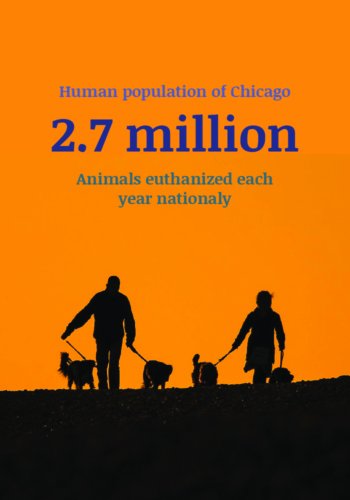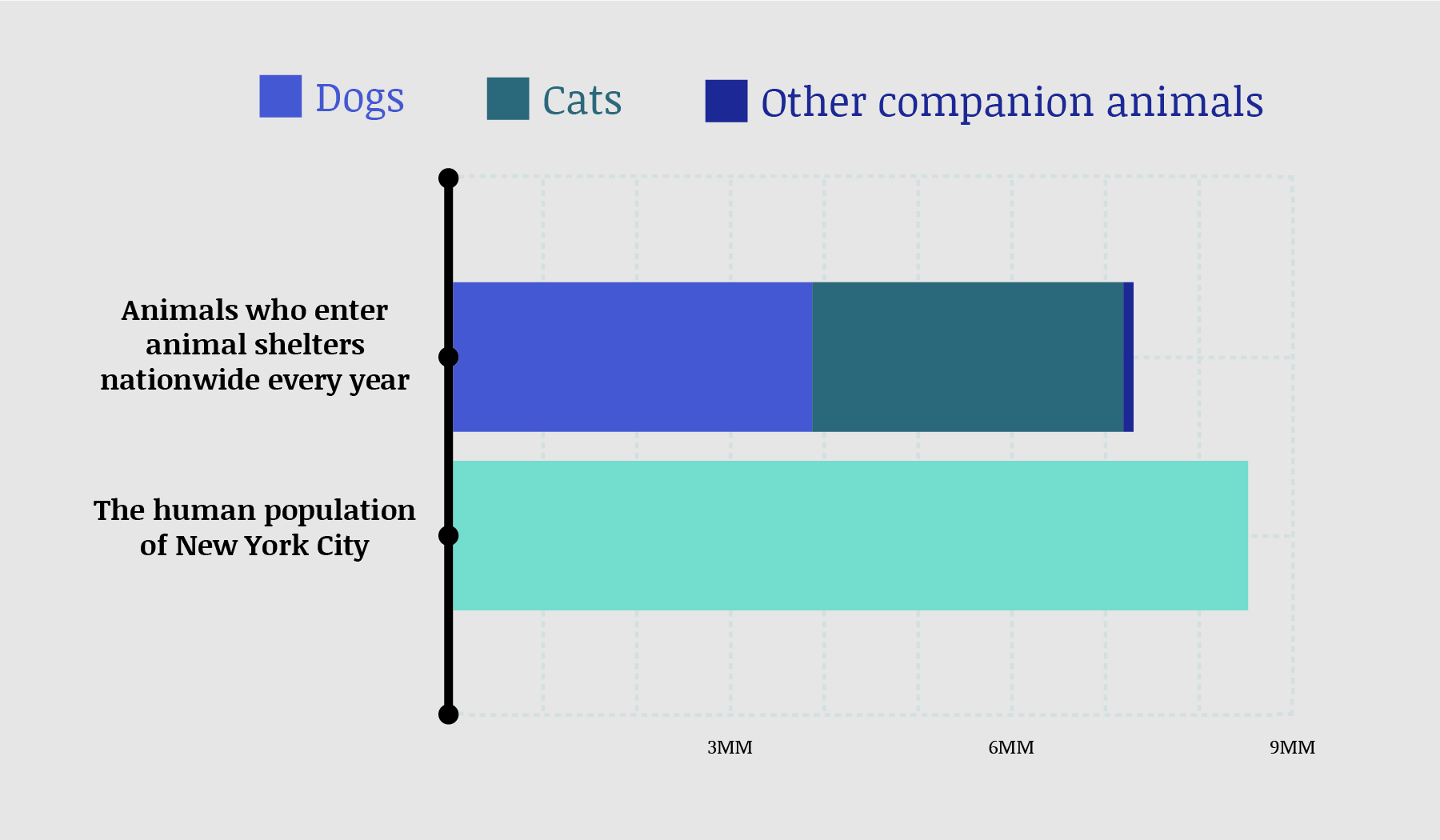Winter Is The Most Dangerous Season for Pets

A0970455 was sentenced to die in 12 hours, and, because he was labeled as violent, a reprieve was unlikely. What I saw through the bars wasn't some hardened criminal, but a hard-luck Pug-Beagle mix of tender age—probably a discarded Christmas gift like so many of the others. He appeared underfed and anxious, quivering in a cramped, feces-littered cage. I wanted to shoulder the responsibility of caring for him, even though they considered him "violent" (mild food aggression, I later found out). I would call him Alfie and we would be good for each other. But no matter how hard I tried, the system would not let me adopt him.
 Almost as many animals, mainly cats and dogs, end up in U.S. shelters every year as there are people living in New York City. Most are discarded within three months of Christmas when people realize these furry presents are no toys. Given only 72 hours to find a new home, sadly more than one-third—2.7 million, roughly the population of Chicago—of these generally healthy animals wind up euthanized each year. The system is clearly broken.
Almost as many animals, mainly cats and dogs, end up in U.S. shelters every year as there are people living in New York City. Most are discarded within three months of Christmas when people realize these furry presents are no toys. Given only 72 hours to find a new home, sadly more than one-third—2.7 million, roughly the population of Chicago—of these generally healthy animals wind up euthanized each year. The system is clearly broken.
It does not have to be this way. In Germany, for instance, animals are euthanized only in the case of terminal illness and shelters house animals as long as it takes to find them homes. There, the idea of buying a dog as casually as one might a four-slice toaster is a foreign concept. No puppy mills exist thanks to strict laws on breeding and public awareness that puppies so produced face greater risk of physical and mental health issues down the road. One applies to get a pet much like one applies for a job: it´s common practice to visit a reputable breeder who will first conduct a screening process to determine your suitability as a recipient family and then, if you pass, supervise how you parent your new pet during the first few months.
A few measures can turn the U.S. system around.
First off, animal shelters nationwide should adopt “no-kill” policies. Right now, the spectrum ranges from cities like San Francisco, where 98 percent of animals that enter its shelters come out alive, to the Southern States where the euthanasia rates are estimated the highest. New York City has a long way to go, but is showing progress with kill rates down by 81 percent over the last decade, mostly due to better access to rescues groups, and low cost neuter/spay programs.
 We also need to address the root of the problem, the flippant purchase and disposal of dogs. Banning puppy mills and the pet-store sale of dogs—like in Germany—
We also need to address the root of the problem, the flippant purchase and disposal of dogs. Banning puppy mills and the pet-store sale of dogs—like in Germany—
would have an enormous impact. This would reduce the number of physically and behaviorally compromised pets, and also help prevent “buyer’s remorse” by being better aware of responsibilities and possible problems of pet ownership. Already Boston and a few other cities implemented recently a ban on the retail and backyard sale of puppies, kittens and bunnies.
We should cultivate an accompanying mindset of “adopt, not shop” by encouraging society to fight the shelter-dog stigma. Highlighting the plight of animals being euthanized via social media is necessary. Practices in shelters need to be reformed towards no-kill policies and improved accessibility for people who want to adopt. Supporting rescue groups is another tool to save animals by extending the timeframe they have to find a proper home. Especially people who never had a dog, but are planning to have one, could “test-drive” first.
These measures should not be expensive. In fact, the government savings should outweigh the costs. Pet ownership has significant overall health benefits, with measurable positive effects on cardiovascular disease, emotional wellbeing, smoking cessation and prevention of obesity among others. The U.S. health care system would stand to save at least $11.7 billion a year according to one study.
It seemed like everything was stacked against Alfie. To burrow through the opaque adoption system upheld by uncooperative employees, I enlisted the help of an external rescue organization—Unwanted NYC pets—and was finally able to secure an adoption date. But when the day came no Alfie appeared. Probably killed by mistake, I was told with a shrug that suggested that it wouldn't have been the first time. I rushed back to the shelter and found Alfie not dead, but wracked by kennel cough. We've spent three wonderful years together and look forward to many more. Unfortunately, most Christmases are not so merry for discarded pets or their potential owners. All the more reason to fix this system now.
Nneka Melanie Okafor the CEO/founder of by alfie, a dog apparel company whose mission is to raise awareness and funds to improve conditions for sheltered dogs.
